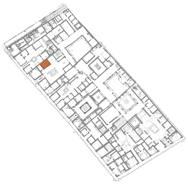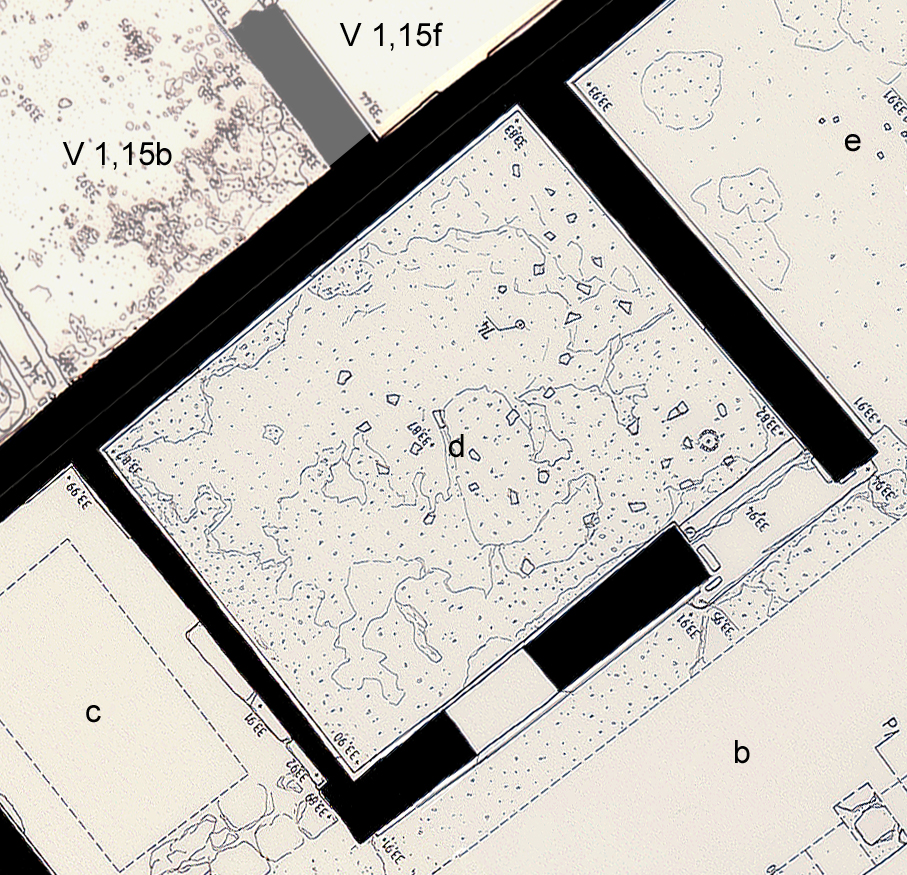Room d
Description
Thomas Staub
This room opens towards the north side of the atrium. Besides through the door the room is also lit up by a window next to the doorway. Since most wall areas are still covered by plaster, the building material and techniques can not be reliably determined everywhere, but it seems, that most of the walls are constructed in opus incertum. Only the south wall show more opus testaceum. In the north wall the main material used in the rubble is Sarno stone, in the other two walls it is lava stone. The uppermost parts of the walls and the roof are results from the latest repairs from 2010-2011.
The walls were once decorated with Fourth Style wall paintings, showing similar tondos as in the fauces with animals and still life motifs. The soccle zone was painted black, ornamented with plants, the tripartite middle zones had lateral field in yellow, the central ones probably ornated with some form of aediculae. The upper zone was, as it is depicted in the cork model in National Museum in Naples white with again aediculae and other architectural ornaments. The floor was made of a lavapesta containing so much ceramique sherds, that it nearly appears as a cocciopesto. As it seems, the eastern most part of the floor was highlighted through the insertion of pieces of coloured stone, most of them in irregular form and placing, only one group makes up a theta - formed ornament.
According to the cork model the uppermost part of the east was ornamented with a vaulted stucco frieze, indicating that the eastern part of the room was ennobled through its vaulted roofing. The depiction of the west wall instead indicates that this area had a flat roof. Thus, not only was the floor bipartite with a more elaborate part in the eastern part of the room (in front of the doorway towards the atrium) but the roofing as well.
The function of the room is, also due to the accentuation of its east part (the part next to the entrance) difficult to define. The bipartitioning could indicate the function as a cubiculum, but in such rooms it is normally the rear part with the space for the lectus which is accentuated. It could of course also have served as a smaller reception room with the window towards the atrium or a combination of both functions depending on the time of the day.
L N-Wand: 4.05 m
L S-Wand: 4.03 m
L O-Wand: 3.04 m
L W-Wand: 2.94 m
Fläche: ca. 12.48 m2.


